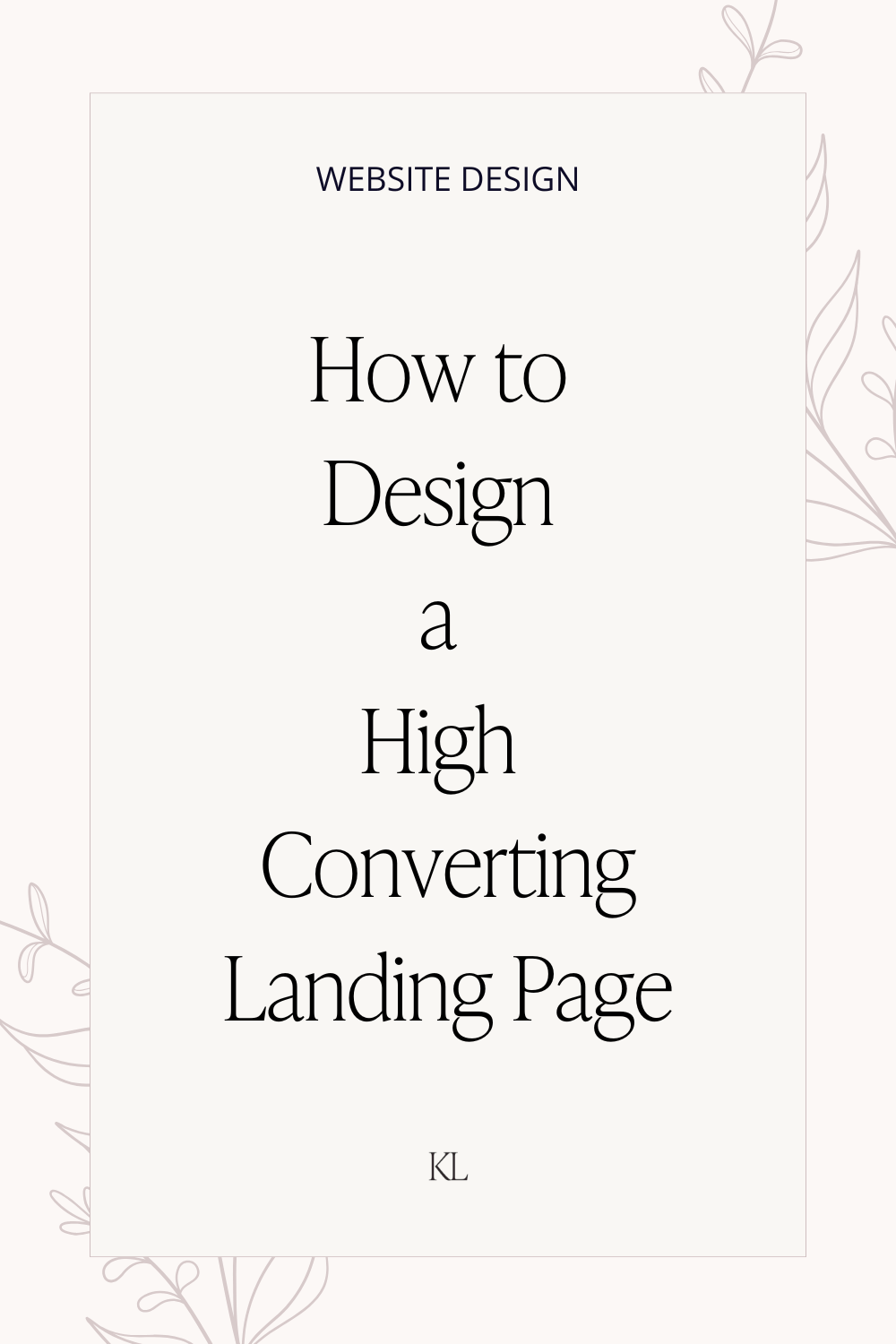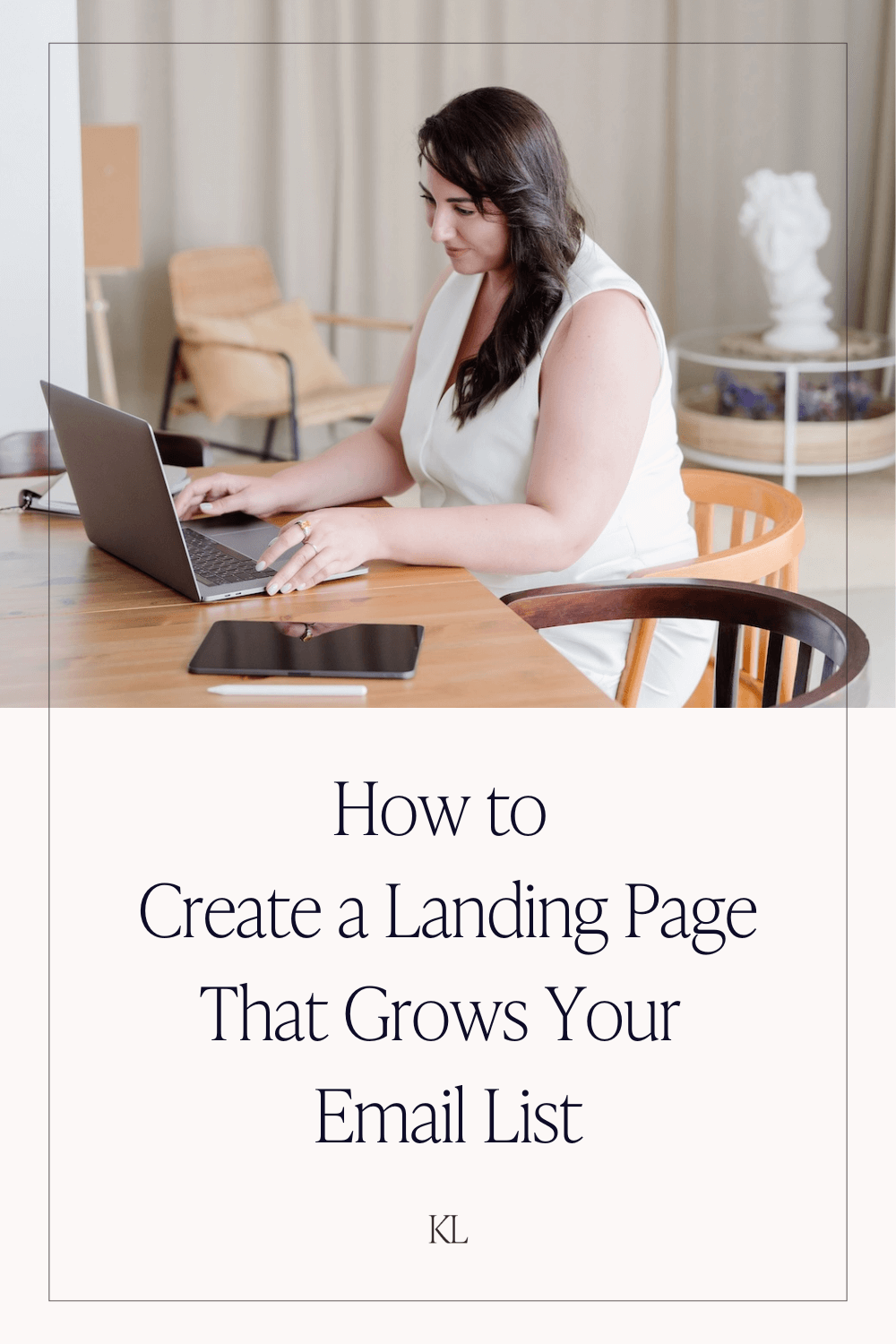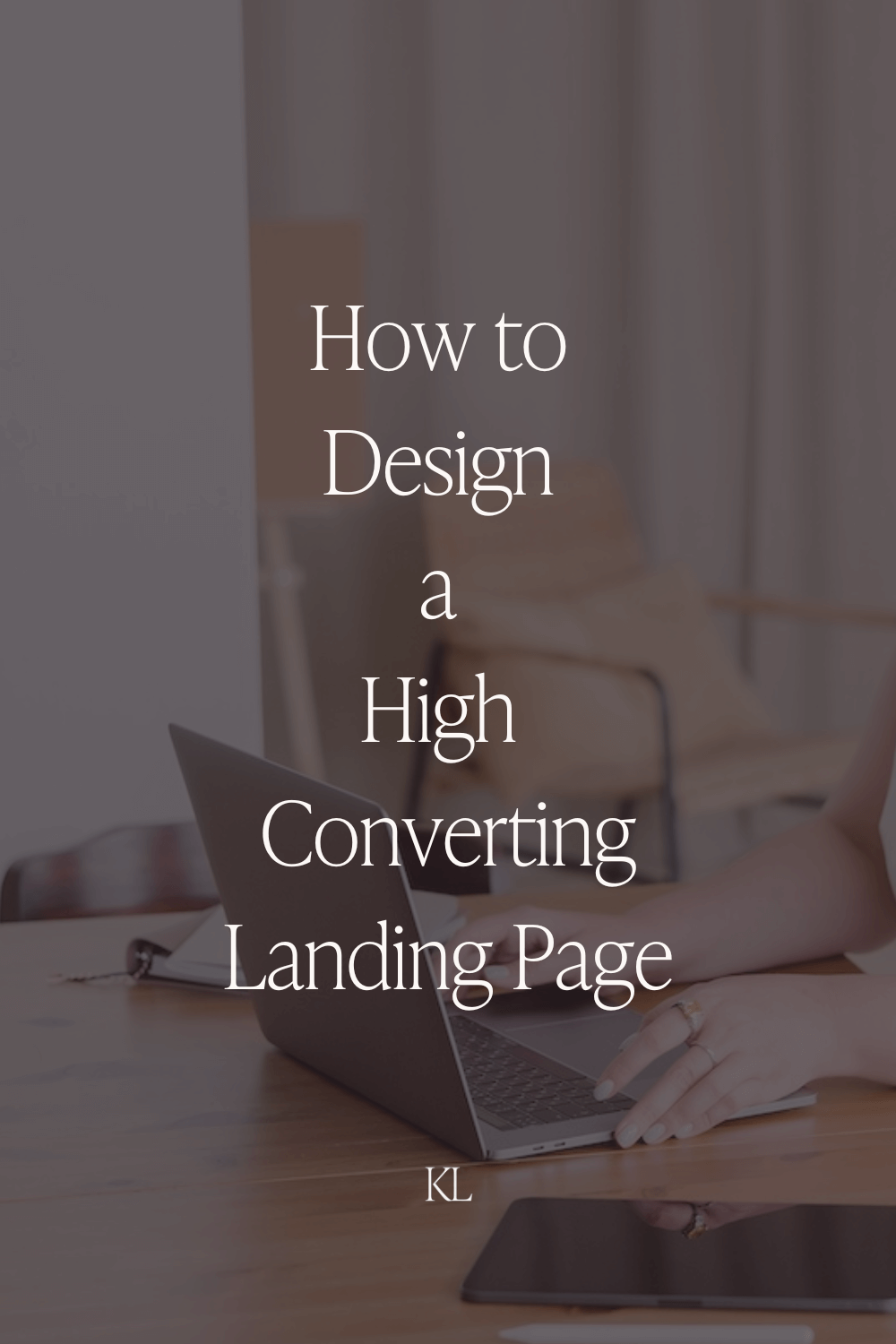How to Design a High Converting Landing Page
As an online service provider, a landing page is one of the most important pages on your website to turn your website visitors into potential leads. In this blog post, I am going to go through everything you need to know about creating a high converting landing page.
What is a landing page?
A landing page is a single page on your website that has one goal: to get your website visitors to give you their email address. This is different from other pages on your website, like your homepage, which may serve several purposes such as brand awareness and navigation.
Read about the 7 other pages you need to include on your website.
Why collect email addresses in the first place?
Email marketing is one of the most effective marketing tools available. Here is why:
You own your email list. This trumps social media followers because you have no control over social media channels, but you do have control over your email list. Social media platforms can disappear or change their algorithms and your content is unlikely to be seen by all your followers anyway. But YOU get to control what you send out to your email list - how often, what time of day and what day of the week.
You can tailor your content to different audience segments. You may have a slightly different audience for each of your services or products. Email marketing platforms enable you to segment the people on your list so you can send them content that is relevant to them only.
You have direct access to someone’s inbox, meaning that you can make your emails far more personal than a generic social media post.
What is a lead magnet?
Your website visitors are unlikely to give you their contact information for nothing in return, so you will have to offer them something of value in return for their email address. This is known as a lead magnet. Examples of a lead magnet are:
a checklist
a webinar
a template
a course
a quiz
Basically, anything that your audience would find helpful.
Once your site visitor has given you their email address in exchange for your lead magnet, they have now entered the consideration stage of your sales funnel.
What is a sales funnel?
A sales funnel is a step-by-step journey that a person takes from when they discover your brand to when they make a purchase.
The 6 steps in a sales funnel are:
Awareness - a person becomes aware of your brand through your marketing.
Interest - they show an interest in what you are offering by clicking and engaging.
Consideration - they evaluate your offer as a potential solution to their problem.
Intent - they show their intent in signing up for your service or buying your product by reviewing the price and terms.
Purchase - the purchase is confirmed when they make payment.
Loyalty - If the service or product was to their liking, they will come back for further services or products in the future.
When a person signs up for your lead magnet, they are at stage 3 of the sales funnel. They are considering your service or product as a potential solution to the problem they are currently facing.
Once you have a site visitor’s email address, you can nurture them by sending them more information directly to their inbox that may encourage them to sign up for one of your service offerings or to purchase a product.
What should go on a high converting landing page?
Things you should include on your landing page:
Headline
The headline should grab your site visitor’s attention and describe what the lead magnet is and who it is for.
E.g. “10 high protein breakfast recipes for women who lift weights”
2. A sub-headline
This is an opportunity to go into a bit more detail about your lead magnet and why it is beneficial
E.g. “No more mid morning munchies! Stay full all morning while supporting muscle growth.”
3. A picture of your lead magnet
If your lead magnet is a digital product, include a mockup here. People process visuals much faster than they process text, and they are more likely to sign up for your lead magnet if they can see what they’re getting.
4. Features and benefits of your lead magnet
Listing the features of your lead magnet is important, but it's more important to describe the benefits of signing up to the lead magnet. Focus on how it solves a problem or improves a situation for the person signing up to it.
5. Social proof
Social proof builds trust. Add in testimonials, user reviews or the number of people that have already signed up. If people can see that your lead magnet is trustworthy, they are more likely to sign up for it.
6. A headshot and brief bio
People like to know the person that is solving a problem for them. Your bio is what sets you apart from others in your industry or niche. If people find something in your bio that they connect with, they are more likely to sign up for your lead magnet compared to others.
7. “As Seen In” Logos
If your work has been featured in publications, include this on your landing page. It speaks to your credibility and goes further to building trust with your site users.
8. FAQs
Your landing page is an opportunity to answer any questions or objections that people may have about your lead magnet. Going back to our example earlier of “10 high protein breakfast recipes for women who lift weights”, some common questions might be:
How long do the recipes take for me to make?
Can I batch cook them?
Do you include the macro breakdown of the recipes?
If all these questions are answered, people know exactly what to expect from the lead magnet and are more likely to sign up.
9. Opt-in Form
This is where you collect a person’s name and email address. I recommend putting at least 3 on a page - one at the top, one in the middle and one at the bottom. This reduces friction and your website users don’t need to scroll very far in order to input their information for your lead magnet.
10. Call to Action (CTA)
Again, I recommend having several of these sprinkled throughout your landing page to make it as easy as possible for people to take action and sign up. I like to use buttons for the CTAs on a landing page so they really stand out. Use copy that encourages the user to take action, such as “Get started today” or “Download for free now”.
How to Structure a High Converting Landing Page
So, now we know what to put on a high converting landing page, how do we structure it so that it actually converts.
Here is an example of how you could structure your landing page:
Above the fold
Headline
Subheadline
Visual / mock up of lead magnet
Opt-in Form
CTA button
Mid section
Features and benefits - written in bullet points so it’s easy to digest
Another visual / mock up of lead magnet
Testimonials / As seen in logos
Headshot and bio
Opt-in form
2 x CTA buttons
Bottom section
FAQs
Benefits highlighted again
Another visual / mock up of lead magnet
Op-in Form
CTA button
Play around with the structure of your landing page over time and test what brings more conversions.
Additional Tips for Designing a High Converting Landing Page
Remove distractions such as your header and footer. You still need to link to the legal pages on your website (Privacy Policy/Terms of Use/Cookie Policy), but remove the links to all other pages. Your landing page has one goal only - to get people onto your email list. Navigation links to other pages will distract your website users and you may lose potential subscribers.
Ensure your landing page loads quickly. If it’s too slow to load people will click away before they’ve even seen your lead magnet or read about it’s benefits. Optimise your images for a faster loading speed.
Make sure your landing page looks great on mobile devices as well as desktop so you capture everyone who is accessing your landing page on their phones (could be up to 60% of your website visitors). Here is my guide on How to Optimise Images for Your Website.
Test different headlines, images, copy and layouts over time. Making small changes here and there may lead to more conversions. But the only way to find this out is to test over time.
How to Design a High Converting Landing Page - The Bottom Line
A landing page is an essential page of any service provider’s website. Be intentional about designing your own landing page. Ensure that it not only looks great, but that people know exactly what benefits you can provide to them. And make it stupidly easy for them to sign up. Ensure you test and tweak your landing page over time so that you can improve it.
↓ Found this post useful? Pin it to Pinterest ↓



